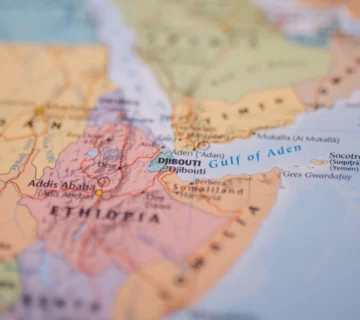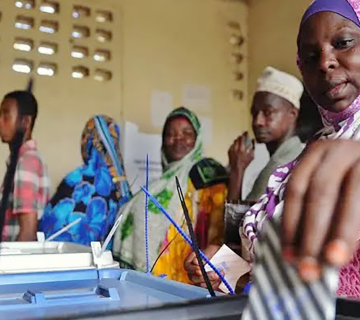Just last month, the year-long armed conflict between the Ethiopian National Defense Forces (ENDF) and Tigray People’s Liberation Front (TPLF) was headed towards a new phase, with the rebel forces having captured strategic towns of Kombulcha, Dessie, and Kemise just about 380km from the capital city, Addis Ababa. Reports showed a significant shift of the ground in favor of TPLF rebels who had formed a military alliance with the Oromo Liberation Army (OLA) and other seven rebel groups to oust the current government led by Prime Minister Abiy Ahmed. The prospect of the fall of Addis Ababa to the rebels was as high as much as the prospect of the violent overthrow of Prime Minister Abiy. A state of emergency was quickly imposed by Abiy and efforts to fortify Addis Ababa began.
Peace Efforts
The international community led by the United Nations (UN), the United States (US), the European Union (EU) and other peace players such as Norway, Canada, the United Kingdom (UK) united in the call for a ceasefire and peace talks to resolve the conflict. The African Union (AU), seized the moment and intensified diplomatic engagements with warring parties in Ethiopia through its Special Envoy, Olusegun Obasanjo, in an attempt to secure a ceasefire and initiate peace talks. The impermeable attitude in Addis Ababa which resisted foreign and regional intervention had changed as the administration seemed to lose control of what it initially intended as a military operation in the Tigray region and was staring at an imminent overthrow. The US on its part flew in its Special Envoy Jeffrey Feltman and Secretary of State Anthony Blinken to push for negotiations and peaceful resolution of the conflict and to avert violent take-over of the Ethiopian government by rebels.
Abiy and Middle Powers Seize the Moment
In the meantime, the Ethiopian government intensified military re-supplies since the rebel forces had also paused their match on the capital to give international and regional efforts a chance. It is during this period that the middle powers’ role in the Ethiopian conflict has become clearer and significant in shaping both the conflict and possible peace. Reports alleged the involvement of UAE, Iran and Turkey (as well as China) in supplying military weapons especially military drones, missiles and other equipment to the weapon-depleted Ethiopian government. In the initial phases of the war between November 2020 and April 2021, there were also reports of UAE drones being used by the Ethiopian military to strike TPLF targets in Tigray. Similarly, more air-strikes by the Ethiopian military have been reported since late October 2021 targeting rebel forces in what seemed to be efforts to reconfigure the balance of forces on the ground to raise the prospect of stalemate or at best, a military disequilibrium that would enable the Ethiopian government to push back the rebels. The immediate imperative seemed to halt the rebel match on the capital and to hold out against rebel forces.
Disappointing Outcomes
The major net result of the heavy involvement of the Middle Powers in the Ethiopian conflict has been diminished leverage by major powers such as the US, international and regional efforts to push conflict actors to an unconditional ceasefire and peace talks. The other impact of the middle powers on the crisis in Ethiopia includes maintaining an intransigent attitude on the part of the Ethiopian government especially with regard to insistence on a military solution, the escalation and continuation of the conflict, and the dwindling prospect for ceasefire and peace talks. In fact, both US and the AU envoys left Ethiopia in November, having failed to secure a ceasefire and bring the warring parties to a negotiating table. Jeffrey Feltman has for instance acknowledged the potential of continued fighting fundamentally undermining peace efforts.
The conflict parties have re-energized and acquired new impetus for military confrontation as Abiy intensifies airstrikes and TPLF and allied forces push to capture another strategic town of Mille in Afar region. Mille links Addis Ababa to Djibouti through the railway and could be targeted with the aim of cutting off the capital from supplies. TPLF and allied forces have spread the conflict to neighboring federal regions of Afar and Amhara in an attempt to outflank the government forces and break the siege on Tigray. Each side now believes in military victory and peace efforts only pale in the background of a military solution. Latest reports indicate the rebels are now in 182 km range from Addis Ababa, after capturing Debre Sina. The Prime Minister is reportedly joining the frontlines as many diplomatic missions rush to evacuate the city including the UN staff, which makes the prospect of a military solution tempting to conflictants.
Focus on Middle Powers
The primary focus of international and regional peace efforts has been on the direct conflict actors, the Ethiopian government and TPLF. While the primary conflict actors have intermittently shown willingness to agree to a ceasefire and peace talks, out of military and strategic reasons, the involvement of middle powers on both sides makes the conflict a proxy one. Abiy Ahmed for instance blamed regional powers especially Egypt and by insinuation Sudan with which Ethiopia is embroiled in a dispute over the Grand Ethiopian Renaissance Dam (GERD) construction on the Blue Nile River. Egypt and Turkey have however had a long-running geopolitical rivalry since the Arab Spring as Egypt attempts to re-assert itself in North and Horn of Africa regions while Turkey aims to increase its influence in the regions. Iran, ‘uprooted’ in the region after the Arab Spring and having been isolated in the region, aims to make a ‘come-back’ and the conflict in Ethiopia seems an appropriate foothold.
It is thus of strategic importance to bring on board the middle powers involved in the Ethiopian crisis so as to unify the peace approach or target them with coercive diplomacy to limit their destabilizing actions and role in the conflict. The UN Security Council in May 2021 placed an arms embargo on Ethiopia and Eritrea (Asmara had participated in the conflict and committed severe atrocities). The US State Department’s Directorate of Defense Trade Controls (DDT) also announced its intention to place an arms embargo on Ethiopia in October 2021. It is thus reasonable to target sanctions violators under the UN and US sanctions regimes on Ethiopia to limit narrow objectives of the middle powers involved, avert further instability in Ethiopia and strengthen peace efforts.
Edmond J. Pamba is a researcher at the HORN Institute.
Photo: A man waves the Ethiopian flag at rally in Addis Ababa on November 7, 2021 immediately after the government declared a national state of emergency (Photo Credit: Eduardo Soteras/AFP via Getty Images)
The contents of this article are copyright of © The HORN Institute 2022. All rights reserved. Any redistribution or reproduction of part or all of the contents in any form and for whatever reason is prohibited. You may use the content of this article for personal reasons, but acknowledge the website as the source of the material.



